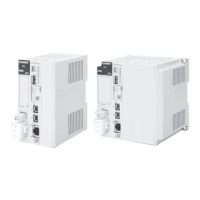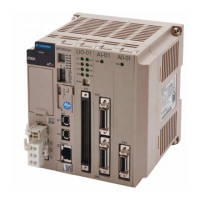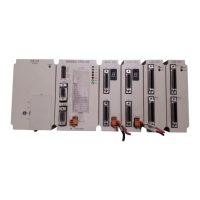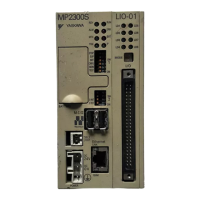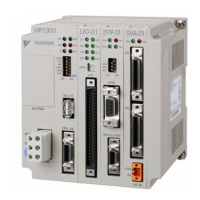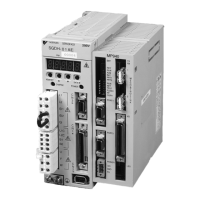2.2 Detail Definition Setting Procedures
218IFD Detail Definition Dialog Box Details
2-12
Code
Select the code of the data to be transmitted for each connection according to the code to set at the remote
station.
RTU: Specifies RTU Mode when the MEMOBUS protocol is being used.
ASCII: Specifies ASCII Mode.
BIN: Specifies Binary Mode.
The code that can be selected is restricted by the selection of the protocol type in the Protocol Type Box as
shown in the following table.
: Can be selected.
× : Cannot be selected.
Connections
A connection is a series of operations to confirm communications and transfer data in one-to-one com-
munications between a local station program and a remote station program.
Port Numbers
A port number is used to identify the target program in the remote station. There is a one-to-one corre-
spondence between port numbers and communications programs. A port number is entered in the
header section of the data, together with the IP address and other information. The remote station trans-
fers the data to the target program identified by the destination port number.
The port number, including the one for the local station, is used to identify the communications service
program at both the local and remote stations.
Unpassive Open Mode
If the remote station’s address is set to 000.000.000.000 and the remote station’s port number is set to
0, the connection is set in the Unpassive Open Mode.
In Unpassive Open Mode, the MP3000 connects to any station that accesses its connection number. If
multiple stations access this connection number, the connection will be established with the station to
which the connection request was sent first. If a connection request is sent from a station while a con-
nection is established with another station in Unpassive Open Mode, the connection that was estab-
lished first is disconnected and a connection will be established with the station for which the
connection request was sent later.
TCP and UDP
TCP is a connection protocol and UDP is a connectionless protocol.
A connection protocol ensures reliable communications because it performs various steps of communi-
cations control, such as arrival checks, error detection and correction, sequence number checks, and
send data size control.
In contrast, a connectionless protocol does not provide the procedures that ensure the quality of com-
munications, and data transmissions are performed in only one direction. Connectionless protocols
thus provide high-speed communications, but less communications reliability.
The selection of TCP or UDP depends on the requirements for communications. Select TCP if reliabil-
ity is important and select UDP if speed is important.
Protocol Type
Code
RTU ASCII BIN
MEMOBUS ×
Extended MEMOBUS ×
A-compatible 1E frame ×
QnA-compatible 3E frame ×
FINS ××
MODBUS/TCP ××
TOYOPUC ××
No-protocol ×
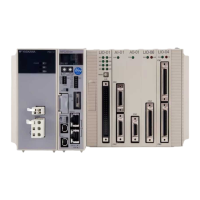
